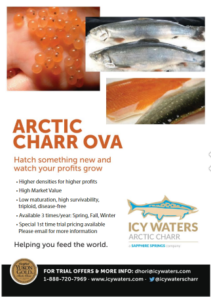Crystal clear
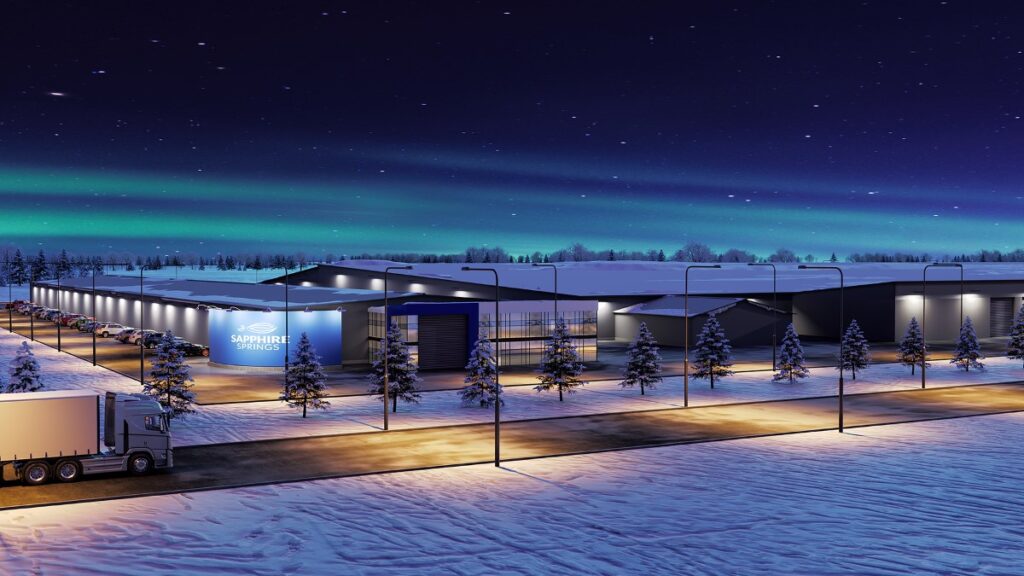
The Prairies, renowned as Canada’s breadbasket, is not the first place you would expect to find a fish farm – let alone one of the largest of its kind in the world. But the location’s excellent water quality will be key to the success of what will be Canada’s biggest Arctic char farm, says the company behind the plan. Sandy Neil reports
But for an ambitious company near Winnipeg, “The Gateway to the Prairies”, the temperate grasslands provide an “exceptional” site to grow Arctic char (also known as charr), a popular salmonid on restaurant dinner plates across North America and Europe. This char will be swimming in pristine cold water from an ancient glacial aquifer that runs beneath the vast Canadian Shield.
Sapphire Springs Inc (SSI), a partnership between seven Manitoba entrepreneurs led by Ken Blair and Chuck LaFlèche, is building a CAN $140m (£82m) fish farm that will produce 5,000 metric tonnes of Arctic char when it is up and running in 2026/7.
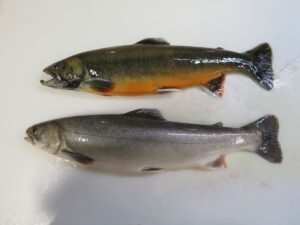
Arctic charr
The site at Rockwood, Manitoba, will become the largest land-based aquaculture facility of Arctic char and boost global supply by a whopping 50%. Its recirculating aquaculture system (RAS) reuses more than 99% of the water, filtering it and treating in multiple stages to bring it back to “a fully pure, crystal-clear state”.
“We started with the science,” an SSI spokesperson began. “We purchased the former site and all its genetic stock from a world-leading Arctic char research facility, previously operated by the Canadian Department of Fisheries and Ocean. We followed that purchase in 2023 with the acquisition of Icy Waters Inc, which is the global leader in Arctic charr broodstock, selling ova to aquaculture facilities around the globe.”
Icy Waters, based at Whitehorse, Yukon, also grows, harvests and sells their fish to food distributors throughout Canada.
As the spokesperson puts it: “With a solid vision to grow and distribute Arctic char products to the world markets at scale, [SSI] saw the potential of acquiring Icy Waters’ exceptional broodstock and company brand as a natural next step in their plan to create a truly world-class company.”
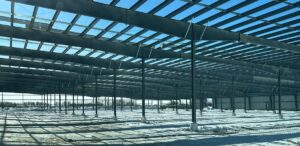
Construction progress
The perfect spot
Sapphire Springs’ first facility is located on a 140-acre site in the subarctic climate of Manitoba, which possesses “the perfect conditions for Arctic char to thrive”.
To explain why, we interviewed Sapphire Springs’ Chief Operating Officer, Doug Hotson.
“It is exceptional site selection,” he said. “One of the reasons we chose Winnipeg, not just that it was the hometown of the entrepreneurs and they wanted to support local and grow local, was this aquifer. The water comes out of an artesian well at 6.5ºC every day of the week. It’s completely pathogen-free. It becomes this perfect water source for growing fish.
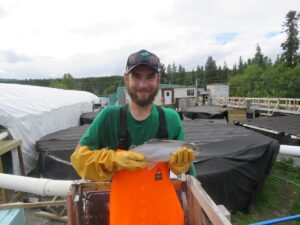
Tank farm life
“Arctic char, as evident by its name, is a cold-water fish and 11ºC is just about optimal. With the natural heat the RAS system gives to the water, from the friction of moving it around and a little by-product from pump heat, that water is going to sit between 11ºC and 12ºC without us heating or cooling anything. It will then provide the heating and cooling in the ambient air temperature. It will remove a substantial amount of the energy cost that other facilities produce.
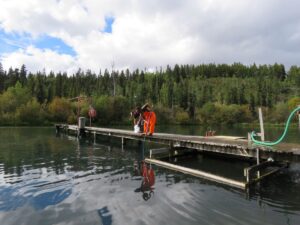
Tank farm life
“Unlike the ocean that moves for free by lunar power, we have to pump every litre of water every second of every day. Manitoba has a great green energy programme, so their cost of power relative to the rest of the Canada is attractive for a large power consumption business.
“For fish to have water and oxygen, you have to have pumps moving. If a pump fails, that’s a large risk. It’s a mechanical device: it’s not if it fails, it’s when. With our design, every piece of equipment has got a 100% redundant backup. That automatically becomes ridiculously expensive.
“What we did is, we built modular units. We’re running basically six farms inside of a farm. Every piece of equipment is sized to handle two units so that if one fails, the other unit can handle the capacity. It didn’t require two times everything. We don’t have to panic that we’re going to lose all of our fish if we have a mechanical failure.”
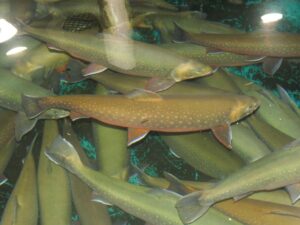
Arctic charr in the tank
Why char suits RAS farming
SSI estimates that is possible to grow Arctic charr, generally speaking, at three times the density of salmon and twice as dense as trout. As a species, it therefore lends itself well to a large capital-intensive project like RAS, because you can leverage that capital so much more effectively with higher densities. Rather than growing at 30kg per cubic metre, SSI can grow up to 90kg or 100kg per cubic metre.
“As fish are pulled out of one of the tanks, they travel in the monorail either to the processing plant for harvest or for splits and grades into other facilities. We’ll never touch a fish; from animal welfare and husbandry, it’s the most minimal stress environment that we could design and create.
“The plan is to grow fish in four different cohorts and that will enable us to harvest every single day. Fish will move through in 13-week increments. So we’ll put four periods of fish down every year. You always have leaders that are going to grow a little bit faster than some other fish. The leaders [are] the ones that are going to be, maybe, late 2026. When we hit steady state, that will be into 2027 – 60,000 fish will come out of the water every week. It equates to roughly a truckload of fish every day.

Arctic charr prepared
“The first year of steady state, the revenue projection is $88m [£51m]. And then, as some things come online in terms of our sustainability and efficiency, as we sell the garden nutrients co-product that comes out of the water waste, as well as the offal that gets sold either into compost to become more fertiliser products or into pet food industries, we will eclipse $100m [£58m].
“Our forecast is to have outside construction complete before winter comes to Manitoba. Then we’ll move inside and begin the plumbing retrofit on the inside of the structure, with a goal of having fish swimming in the facility for April next year. It’s an 18- to 19-month growth cycle. If everything goes perfectly smoothly, the first commercial harvest will happen in 2026.
“There are only 10,000 roughly metric tons of Arctic char sold in the world. Right now, Iceland is the largest supplier. We’re building a 5,000 metric ton facility, [which] will make us the largest producer of Arctic char on the planet. Outside of that, we believe we’re the largest global supplier of ova through the Icy Waters acquisition.
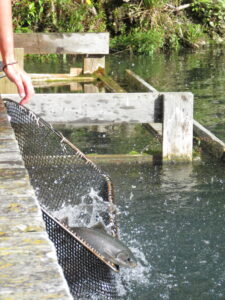
Working on the farm
“A fish can be delivered in North America fresh on truck within 30 hours of finished processing. It’s just not possible to be in California from Iceland in 30 hours from processing. It’s going to give us an opportunity to be the freshest product on the marketplace.”
With Arctic char in high demand for its taste, texture and nutritional profile, SSI expects to begin work on future production facilities almost immediately. “We have already begun planning two additional aquaculture facilities to be located on the east and west coasts of Canada,” it said. “These facilities will greatly expand our production capacity and also allow us to improve shipping times to both coasts of North America as well as to Europe and Asia.”

